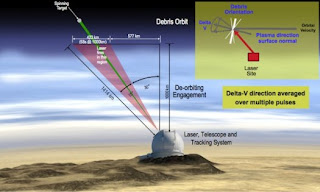
Rossi, an Italian inventor, claims to have come up with the Holy Grail of power generation, an "Energy Catalyser" or E-Cat, which produces limitless energy. He has already carried out laboratory demonstrations in front of scientists and the Italian media, and in October he plans to unveil a one-megawatt power plant in the US. If it works, the E-Cat is the biggest thing since atomic power, bringing an inexhaustible supply of cheap energy. It looks much too good to be true and many dismiss it as an obvious scam, but Rossi has powerful support from some surprising quarters.
The E-Cat is deceptively simple: hydrogen is passed over a special catalyst based on nickel in a container about a litre in size, and enough heat is produced to boil water. A demonstration in January appeared to show a several kilowatts of output from a four hundred watt input. The catalyst is secret, but Rossi says it can be produced at low cost. The two questions that matter: does it really work? And what are the implications if it does?
The E-Cat is the latest incarnation of cold fusion, an area long shunned by respectable scientists. In 1989, researchers Stanley Pons and Martin Fleischmann claimed to have produced a small amount of energy by nuclear fusion on a lab bench via electrolysis. This was unprecedented and appeared to contradict accepted science, as fusion only occurs at temperatures of millions of degrees in the Sun and stars.
Other scientists failed to replicate this cold fusion, and the whole field was soon labelled bad science at best. Few journals will cover it these days. In science terms, an interest cold fusion is up there with astrology and alchemy.
A few scientists do still work in this field, notably at the US Naval Research Laboratory. Occasional papers are published claiming positive results in the area of "Low Energy Nuclear Reactions" and "excess heat generation". Nobody calls it cold fusion, and this is an area led by experiment rather than theory. But some scientists are breaking cover.
Frank Acland has been following Rossi's work closely, and has a website, E-Cat World, tackling the latest developments. He reels off a list of scientists who have examined the E-Cat for themselves and verified what was happening.
"They have all gone on the record to say that they believe that there is a nuclear reaction taking place, " says Acland, "that the levels of energy output the E-Cat produces could not come from a chemical reaction."
The demonstrations appear to show a lot more heat is coming out of apparatus than goes in. Two Swedish scientists from NyTeknik magazine ruled out any hidden power source and concluded: "The only alternative explanation is that there is some kind of a nuclear process that gives rise to the measured energy production." Unlike the Pons and Fleishman experiments, where the excess heat was tiny, this is on a massive scale. Rossi even claims to have been heating a factory using E-Cats. It's a big effect -- or a big hoax.
Rossi's heavyweight supporters include 1973 physics Nobel prize winner Brian Josephson. Josephson also supports telepathy research. Dennis Bushnell, chief scientist at Nasa's Langley Research Centre, appears to be a believer in the E-Cat, commenting in a recent interview with Electric Vehicle World that the science was being worked out and, "I think this will go forward fairly rapidly now". However, Nasa scientists are still at the stage of exploring whether there is valid physics behind the E-Cat rather than actually buying them.
Darpa, the Pentagon's advanced science wing, has also been involved in this field. Budget documents reveal a longstanding interest in low energy nuclear reactions, and the plan for 2012 includes the line "Establish scalability and scaling parameters in excess heat generation processes in collaboration with the Italian Department of Energy."
Ex-Darpa chief Tony Tether told New Energy Times that "If it is a hoax, it's a damned good one."
Inventors often complain that their technology could change the world if investors would just give them a few million to produce it. Rossi will get his chance. The one-megawatt device Rossi plans to soon demonstrate was originally meant to be made by combining 300 small E-Cats. It will now comprise 52 larger E-Cats.
What will it mean if it does work? The E-cat will provide a lightweight source of cheap energy, without any CO2 emissions. (And unlike nuclear fission, there is also no radioactive waste.) This could turn the world upside-down, and trigger a new industrial revolution which would shift away from fossil fuels and into an era of clean, plentiful energy.
The simplest application would use the steam or hot water from an E-Cat for heating. An E-Cat could heat your home so you would never need gas, oil or coal again. It could be scaled to heat offices, factories, or other buildings. Rossi eventually hopes to make 300,000 E-Cat modules a year.
The E-Cat could also bring back the steam engine. The steam car powered by an E-Cat could replace the electric car as green transport. The idea is not as peculiar as it might sound; steam cars have a long pedigree, and speed record for this type of vehicle is held by the British Steam Car team who achieved an impressive 149 mph in 2009. It might not make the sort of noise beloved of Jeremy Clarkson, but you'd never have to stop at a petrol station again, just top up with water at intervals.
Electricity generation is more challenging. Rossi says the E-Cat only runs at about 500 degrees for safety reasons; modern power plants run at higher temperatures, which are more efficient. Rossi says he is working on the problem, and reckons that E-Cats could produce electricity for about 2,000 Euros per kilowatt initially, with costs falling dramatically when economies of scale kick in. Combined heat and power units would be most economical, and domestic E-Cats could see people selling to the grid rather than buying from it. Energy prices would plummet, and it could create a new type of economy.
"Many people go to work every day to have enough money to fuel their cars, pay the light and heat bills, and to pay for goods whose cost is largely made up of the energy required to produce and transport it," says Acland. "If energy prices go down across the board, theoretically goods will become much cheaper, and people won't need to work in the same way that they do now just to survive."
Because it does not produce carbon dioxide, the E-Cat solves the CO2 emission problem at a stroke. Transport, manufacturing and heating will all switch over to E-Cat because of the lower costs, and fossil fuels would become a thing of the past. Britain's reliance on imported gas would end, and oil imports would all but cease, being confined to a few niche applications. Oil companies, and oil-based economies, would collapse.
It's an appealing vision -- unless you happen to be working in one of the sectors that would be affected -- but until later this month we can't tell if it's for real.
Skeptics point to the lack of published science, and the way that Rossi keeps details of his special catalyst secret. They also point to his past involvement in Petroldragon, a company involved in converting organic waste into fuel, which collapsed in the 1990's amidst allegations of dumping toxic waste. (Rossi maintains that he was the victim in this complex case).
And the E-Cat development has thrown up its own scandal. Until August of this year, Rossi was planning his big launch in Greece, and an E-Cat factory was being built in Xanthi. But the deal has somehow fallen through for unexplained reasons, vaguely blamed on pressure from "international energy interests" who may be threatened by the invention.
The megawatt E-Cat will be unveiled in America. Rossi has licensed the technology to a start-up called Ampenergo. Though new, the company has credentials; one of its founders is Robert Gentile, Assistant Secretary of Energy for Fossil Energy at the US Department of Energy (DOE) in the 90's.
Rossi claims the demonstration will be attended by high-level scientists and science journalists, unlike previous occasions which have had little mainstream coverage. They have not so much attacked his claims as ignored them.
Surprisingly enough, Rossi's most severe critic is Steven Krivit, editor of the New Energy Times. Krivit has had years of experience at looking at all sorts cold fusion devices which have been claimed to produce power. His team have carried out a very thorough analysis of Rossi's demonstrations and they have their doubts.
"According to my analysis, his claim has no scientific credibility," Krivit told Wired.co.uk. The device he claimed to heat a factory in Bondeno seems to exist only on paper."
Krivit's analysis looks at the amount of steam that actually comes out of the device and the way it is measured. He concludes that the E-Cat does not have nearly the output he suggests, and may not even be producing excess energy.
Krivit's answer to the question of whether Rossi's demonstrations support his claims is: "Definitely no."
There is some irony at work here: we apparently have a number of mainstream scientists backing an outlandish project which inves, tors are putting money into, while the most vocal critic comes from the world of cold fusion.
Who's right? The only way to find out will be to watch out for what Rossi does later this month.
by "environment clean generations"




























